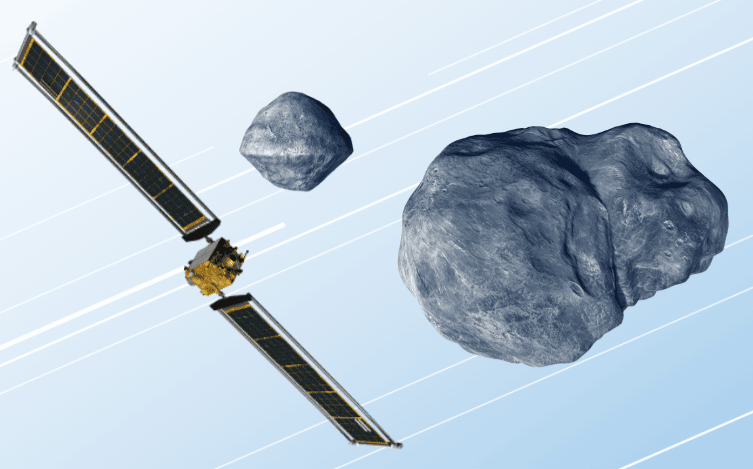
The National Aeronautics and Space Administration (NASA) has declared its mission to deviate an asteroid called Dimorphos a success as the impact of the agency’s spacecraft has resulted in a meaningful change in the object’s orbit.
The Double Asteroid Redirection Test (DART) was a program that consisted of crashing a spacecraft into the asteroid as a planetary defense measure in case a similar object is lined up to crash into earth.
The impactor was launched on 23 November 2021 and the impact was recorded on 26 September. The before-and-after pictures were taken by the Webb and Hubble telescope to observe the object’s behavior and provide further data about the nature of its surface and other event-related dynamics like the “ejecta” that results from the impact.
DART Modified the Object’s Trajectory 25X More than Expected
According to a press release published by NASA, the impact successfully changed the amount of time that it took Dimorphos to fully orbit its parent asteroid – Didymos – by as much as 32 minutes after the agency’s spacecraft impacted the object.
The program’s goal was to delay the asteroid’s orbit by just 73 seconds, meaning that the result exceeded the agency’s target by more than 25 times.
“This result is one important step toward understanding the full effect of DART’s impact with its target asteroid”, commented Lori Glaze, NASA’s director of the Planetary Science Division.
Also read: Quick Guide to Invest in Tesla (TLSA) Stock
“As new data come in each day, astronomers will be able to better assess whether, and how, a mission like DART could be used in the future to help protect Earth from a collision with an asteroid if we ever discover one headed our way”, the space scientist added.
Further studies are being conducted by NASA on the aftermath of the event such as how the impact’s debris behaves while observations in regards to the object’s orbit days, weeks, and months after the collision are also being made in collaboration with the assistance of several other institutions including the NASA Jet Propulsion Laboratory and the National Science Foundation.
What is DART’s Mission?
Dimorphos is a 520-foot-long asteroid that is currently traveling at 14,000 miles per hour and is 7 million miles away from earth. The object does not present a threat to our planet but NASA and other space agencies are constantly surveilling space to identify objects whose trajectory may put them in course of collision with us.
Objects such as the one that collided with Dimorphos are called an “impactor spacecraft”. This is a low-cost vessel with a simple structure comprised of solar panels and a box that carries the propellant required to maneuver so it can reach its target.
The goal of the experiment was to study the impact of “kinetic impactors” on the trajectory of large space objects and the Didymos system – a world that means “twin” in Greek – provided the perfect environment for a test to be conducted as models validated that in no scenario earth would be threatened by a deviation in Dimorphos orbit. Moreover, the strength of the impact did not have the capability of disrupting the object’s orbital mechanics to the extent that it may turn into a threat in the future.
“While no known asteroid larger than 140 meters in size has a significant chance to hit Earth for the next 100 years, only about 40 percent of those asteroids have been found as of September 2022”, the official website of the DART mission commented to justify its efforts.
Other Related Articles:
- NASA Artemis Signals the US vs China Race to Build a Moon Base is Go
- Elon Musk’s Starlink Satellite Internet Network Now Has 1 Million User Terminals
Tamadoge - The Play to Earn Dogecoin
- '10x - 50x Potential' - CNBC Report
- Deflationary, Low Supply - 2 Billion
- Listed on Bybit, OKX, Bitmart, LBank, MEXC, Uniswap
- Move to Earn, Metaverse Integration on Roadmap
- NFT Doge Pets - Potential for Mass Adoption